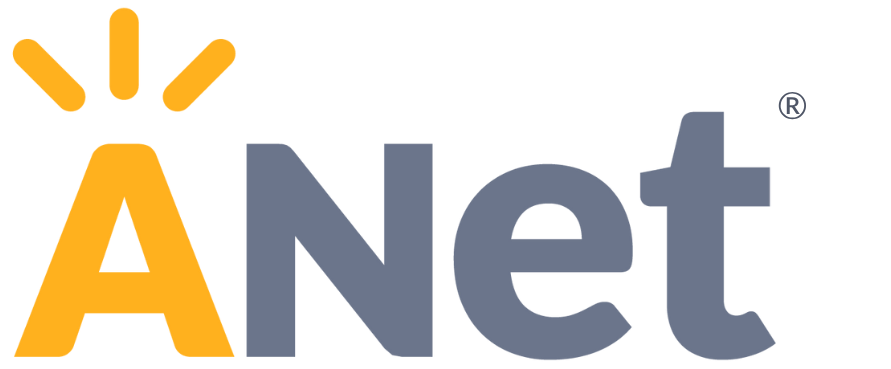 Here at Achievement Network, we are driven by our commitment to expand educational opportunities for all students. As the Vice President of Instructional Products, this commitment is one of the most compelling reasons I and my team do the work we do at ANet. My team’s focus is to create high-quality, instructionally-focused assessments that are designed to support educators. Our goal is to build empowering assessments that support and enhance curriculum & instruction and are a crucial part of a student’s learning and growing journey. We care deeply about the assessments we develop and strive to ensure the data they provide helps teachers understand student learning and support decision-making about what to do next in instruction.
Here at Achievement Network, we are driven by our commitment to expand educational opportunities for all students. As the Vice President of Instructional Products, this commitment is one of the most compelling reasons I and my team do the work we do at ANet. My team’s focus is to create high-quality, instructionally-focused assessments that are designed to support educators. Our goal is to build empowering assessments that support and enhance curriculum & instruction and are a crucial part of a student’s learning and growing journey. We care deeply about the assessments we develop and strive to ensure the data they provide helps teachers understand student learning and support decision-making about what to do next in instruction.
However, instructional-focused assessments are only part of the story - the environment within which student growth and learning occurs is just as crucial. Early in my career as a teacher educator in large city school districts, I focused much of my research and practice in helping teachers understand high-leverage and ambitious mathematics teaching practices. I quickly realized how difficult it was for teachers to enact math practices that focused on drawing out student voice and building self-efficacy without a classroom environment to support those practices. I needed to focus teachers on nurturing a classroom that built on and to students’ prior knowledge, provided structures that support strong academic attitudes while building strong relationships with students so they feel safe to take risks, think critically, and try new things. Now, years later, I am again working to enact the same ideals - believing that all students deserve the opportunity to thrive in an empowering learning environment that honors the humanity of all members of the learning community — one that centers on student voice, affirms their whole identities, and actively facilitates their sense of belonging and self-efficacy.
So, how might these two goals come together - how can teachers and students use instructionally-focused assessments as an integral part of an empowering learning environment?
A peek into an empowering learning environment
An empowering learning environment honors the humanity of all members of the learning community and brings together the content knowledge to be taught and learned and the community where everyone feels safe and cared for. Teachers and students alike must feel a part of the learning environment and feel empowered to have an impact on what occurs in the classroom. Drawing on research and my experiences working closely with educators in schools and classrooms, let me describe what I believe an empowering learning environment can look like for students and teachers.
In such an environment, students experience open communication, collaboration, and risk-taking, while developing the perseverance needed to have academic success. Students have multiple opportunities, through multiple methods, to learn rigorous and on-level content while regularly discussing challenging ideas in ways that build agency and ownership. The learning environment also offers students the space to make personal connections to what they are learning through consistent access to high-quality content that represents folks across the world. Through this learning environment, students, in conjunction with their teachers, carve a pathway for their learning.
Teachers must also consider how they fit into the learning environment they craft. They reflect on their own beliefs and habits and acknowledge the way those beliefs and habits interact with their teaching practices and classroom atmosphere. Teachers take into account the multiple perspectives students bring to instruction and how those perspectives impact how content is delivered. Developing a classroom that nurtures students’ identities and self-efficacy requires the classroom to be a safe space. To do this, teachers readily address issues and events that might make students fearful and hesitant in their interactions with others.
Assessing in an empowering learning environment
Considering these examples of what an empowering learning environment might look like for students and teachers, let’s next think about the role of assessment in such an environment. We know assessments provide a moment-in-time snapshot of what students have learned. But for an empowering learning environment, assessments should also gather data from student discussion, expression, and observation in order to understand what they think and how they feel about what they’ve learned. Together, assessment then becomes the mechanism that gives teachers the information they need to better understand who their students are - academically, socially, and personally - which is foundational for creating an empowering learning environment. What might you expect to see from assessments designed to support an empowering learning environment?
Assessments should drive instructional action for educators while being an engaging, accessible, and meaningful opportunity that reflects important on-level learning.
This point is focused on a simple idea around assessment: assessments should assess what has been taught. In order to understand how and what students are learning, regular assessment points that are aligned with the overall district assessment plan, classroom instruction, and curriculum and standards lead to the best opportunities to gather useful data. Assessments should offer varied and intentional opportunities, from short quizzes to student reflections, so the information collected provides a fuller story of student learning. That way, the assessments offer detailed information to teachers about student learning and can lead to meeting learning goals at all levels.
Assessments should provide actionable data insights that students, teachers, and leaders can use to set & reach goals, monitor progress, celebrate, and reflect together.
Assessment for learning is most powerful if the result and information gathered from such assessments is actionable. Assessment data collected on a regular cadence enables teachers to adjust learning targets and instructional goals and allow for repeated measurement of skills to support learners’ retention and growth of what they are learning. From the assessment data collected, students can reflect on their areas of strength and growth as well as their mindset about their learning. Additionally, including individual and collaborative reflection opportunities as features in an assessment system can encourage and support students to be agents in their own learning. Finally, assessment data the ability to track students through assessment data allows educators to maintain a focus on rigor and how students are moving toward their goals
Assessments honor the experiences and knowledge students & their families bring and provide multiple means through which students access content and demonstrate their brilliance.
Assessments in an empowering learning environment draw strongly on understanding students’ needs, habits, and beliefs about learning, and use that information to provide specific assessments for them. Students are active agents in their learning and should engage in collaborative discussions about assessment content, feedback, and goals. Well-designed systems of assessment also include a variety of assessment opportunities for all students - one kind of assessment, one item type, or one method of assessing will not fully represent the information needed to understand student learning. Assessment content should be purposefully designed to acknowledge and reflect who students are, how they show up in schools, and be relatable. By eliciting and using this robust collection of evidence, a well-designed assessment system provides students, teachers, leaders, and families with information to make learner-focused instructional choices without sacrificing rigor in instruction or losing sight of important on-level learning goals.
Building empowering learning environments for today’s student, designed to support their growth and learning trajectories, requires a considered, collaborative, and comprehensive assessment system. Such a system nurtures students’ strengths, acknowledges and upholds their individuality, is dedicated to their success, and is a critical part of creating classrooms where all learners can grow and flourish. Creating an assessment system that meets the outcomes described is not an easy task, but is a worthwhile one. By striving for assessments that reach these goals, we can be one step closer to providing academically rich and empowering learning environments for all the students we serve.
Interested in learning how our assessments support teachers and students? Download our paper Teaching Comes First!
This blog is part of Assessment Week 2024. View our other Assessment Week resources:
